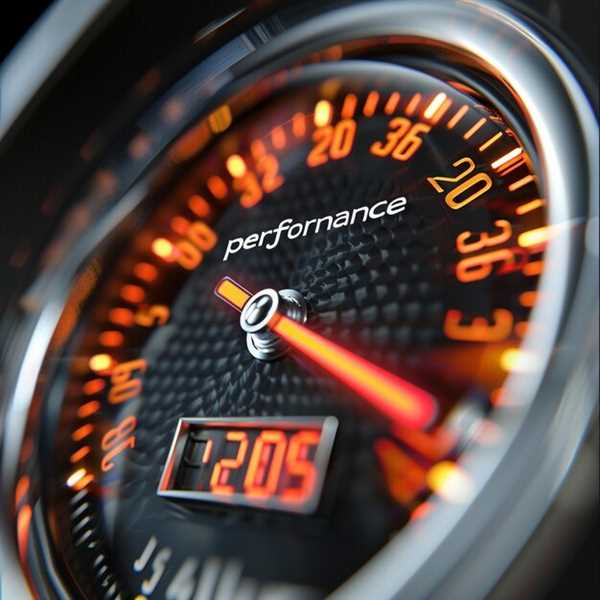
Investing in a high-performance exhaust system is a smart move that can substantially increase horsepower and torque. This upgrade improves the flow of exhaust gases, resulting in a more responsive throttle and enhanced engine sound.
Consider lowering the suspension for improved handling dynamics. A stiffer setup combined with adjustable coilovers allows for customization based on driving conditions, which can greatly impact cornering stability and overall grip.
Installing a high-performance air intake system can optimize airflow into the engine, providing better combustion and elevating engine efficiency. This modification not only boosts power but also enhances engine sound for a sportier driving experience.
Don’t overlook the importance of a high-quality tune for the engine management system. Proper tuning aligns fuel and ignition maps with these upgrades, ensuring your vehicle operates at peak potential, maximizing both speed and efficiency on the road.
Improving Horsepower Through Engine Tuning Techniques
Performing an ECU remap can significantly enhance engine output. By recalibrating the engine’s control unit, tuners adjust parameters like fuel-to-air ratio and ignition timing, resulting in increased horsepower. A bespoke mapping tailored to specific modifications can yield optimal results.
Installing a performance air intake system allows better airflow into the engine. Increasing the volume and speed of incoming air can lead to a notable rise in power production. Combine this upgrade with a high-flow exhaust to reduce back pressure, maximizing engine efficiency.
Upgrading to a larger turbocharger or supercharger can profoundly boost power levels. These components compress more air into the combustion chamber, facilitating a greater fuel burn. Tuning the engine dynamics accordingly ensures additional horsepower without compromising reliability.
Using high-octane fuel can also have a positive impact. Higher octane ratings prevent knocking, allowing for increased ignition timing and improved performance. This approach, paired with tuning adjustments, can push an engine’s limits further.
Consider adjusting the fuel injectors to accommodate increased airflow. High-performance injectors deliver fuel at greater rates, ensuring proper air-fuel mixture across higher RPMs. This change is crucial for supporting any enhancements made to airflow.
Enhancing Handling with Suspension and Brake Upgrades

Installing coilover suspension systems provides adjustable ride height and damping settings, allowing precise tuning of vehicle dynamics. This method improves cornering stability and response, making it easier to tackle tight turns.
Stiffer anti-roll bars can greatly reduce body roll during aggressive maneuvers, improving overall handling. Consider selecting a setup that complements the existing suspension for optimal balance and comfort.
Replacing stock bushings with performance-grade components made of polyurethane enhances steering feedback and reduces play, leading to increased precision during high-speed driving.
The addition of high-performance brake pads and rotors increases stopping power, providing confidence during spirited driving. Look for products that offer better heat dissipation to maintain consistency during prolonged use.
Adjustable camber kits allow for fine-tuning of wheel alignment, enhancing tire contact with the road. This can lead to better grip and reduced tire wear, especially during aggressive cornering.
Consider lightweight wheels, which reduce unsprung mass, improving acceleration and handling responsiveness. Ensure compatibility with tire specifications for the best results.
Overall, implementing a combination of these enhancements will lead to a remarkable improvement in handling characteristics, making each drive more engaging and enjoyable.
Optimizing Aerodynamics and Weight Reduction Strategies

Install a front splitter to enhance downforce and reduce lift at high speeds. This modification helps maintain stability during acceleration and cornering, promoting better handling.
Consider a rear wing that suits your vehicle’s profile. A well-designed wing balances aerodynamic forces, contributing to improved grip on the track.
Utilize lightweight materials, such as carbon fiber or aluminum, for components like the hood, trunk, and body panels. This can lead to significant weight savings without compromising structural integrity.
Remove non-essential items from the interior, including spare tires and sound insulation. This not only reduces overall weight but also enhances driver engagement.
Install lightweight wheels made from forged aluminum or magnesium alloys. These not only decrease unsprung weight but also improve acceleration and braking responsiveness.
Optimize underbody panels to create a smooth airflow underneath. This can lower drag and improve fuel efficiency, especially at higher speeds.
Engine tuning is critical; ensuring the engine operates efficiently can indirectly support aerodynamic modifications by maximizing power output and reducing excess weight carried by the engine system.
Utilize a custom exhaust system designed for weight reduction while optimizing flow for performance. A lighter exhaust can reduce the vehicle’s overall mass and enhance throttle response.
Finally, implement active aerodynamic components that adapt to driving conditions, adjusting to minimize resistance or increase downforce as needed. This dynamic approach provides flexibility across various driving scenarios.